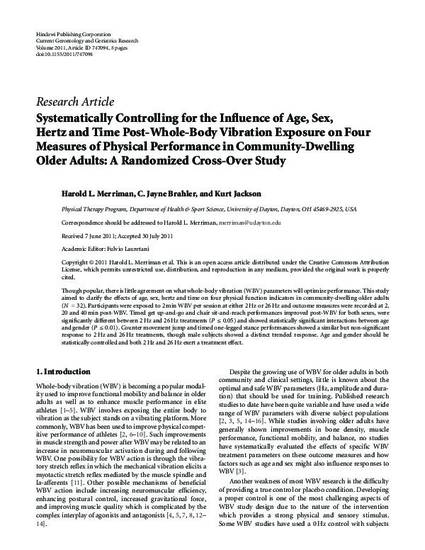
Though popular, there is little agreement on what whole-body vibration (WBV) parameters will optimize performance. This study aimed to clarify the effects of age, sex, hertz, and time on four physical function indicators in community-dwelling older adults (N = 32). Participants were exposed to 2 minutes WBV per session at either 2 Hz or 26 Hz, and outcome measures were recorded at 2-, 20-, and 40-minute post-WBV. Timed get-up-and-go and chair sit-and-reach performances improved post-WBV for both sexes, were significantly different between 2 Hz and 26 Hz treatments (P ≤ 0.05), and showed statistically significant interactions between age and gender (P ≤ 0.01). Counter movement jump and timed one-legged stance performances showed a similar but non-significant response to 2 Hz and 26 Hz treatments, though male subjects showed a distinct trended response. Age and gender should be statistically controlled and both 2 Hz and 26 Hz exert a treatment effect.
Available at: http://works.bepress.com/c_jayne_brahler/3/

Document is made available for download with publisher permission. Documentation is on file.